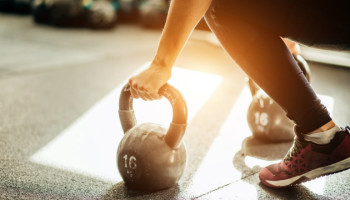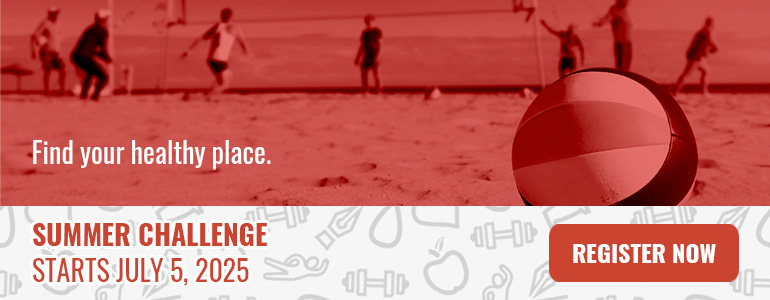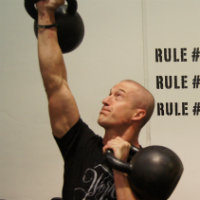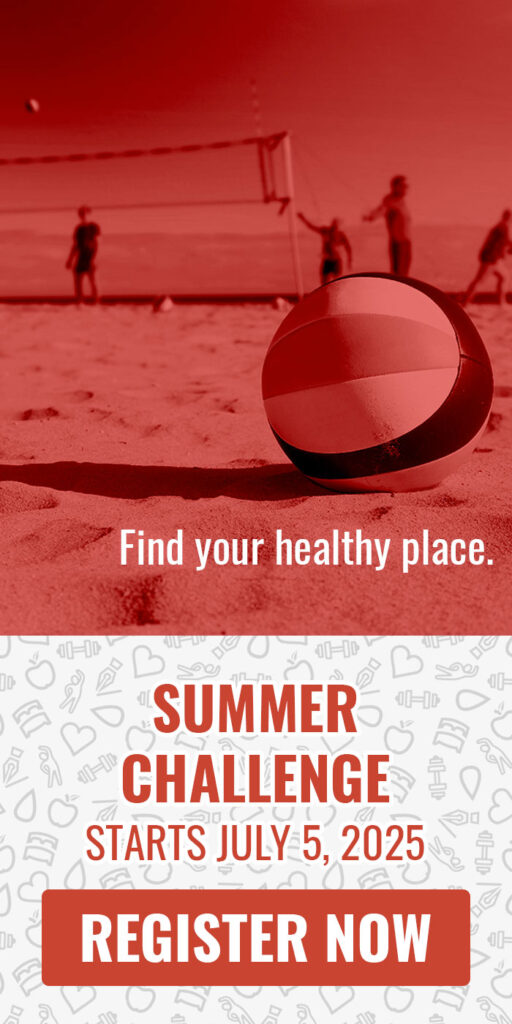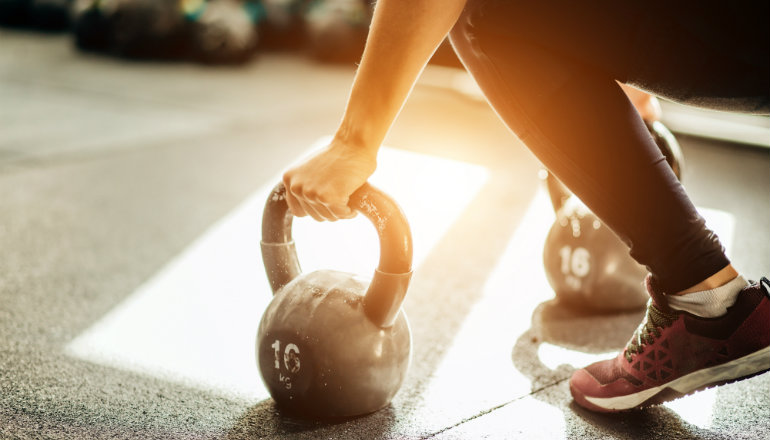 Reading Time: 6 minutes
Reading Time: 6 minutesTraining is simple. We make it far more complex than it really needs to be. Lift more weight — either by performing a higher volume (sets x reps) or by increasing intensity (lifting a heavier weight) — and you’ll improve. However, there are some exercises that should be considered your main courses and others that don’t even rate a mention on the kids’ menu.
Much of how training is viewed today still stems from years of bodybuilding-dominated fitness media. Bodybuilders need to hit their bodies from every possible angle to enhance development of individual muscles as much as possible. Since so much of what we read about fitness evolved from bodybuilding, we, the general public, end up with a list of exercises that is far bigger than it needs to be when viewed through a strength-training-only lens.
Our exercise list can really be as simple as:
- Upper push
- Upper pull
- Hip dominant movement (hinge)
- Quad dominant movement (squat)
- Split stance
- Core
Approaching our training with only these six options makes forming plans quite easy. For the most minimal training plans, select an upper movement and a lower movement, and then finish with core. For the next workout, select the opposing upper movement and a different lower body pattern, and finish with core. Simple.
But not all exercises are created equal when training is approached this way. A barbell back squat makes for a far better quad-dominant option than a leg extension. Both are quad dominant, but one will boost muscle size, strength, and performance while the other just seems to be a good way to hurt your knees.
So how do you know which exercises to use?
Let’s begin answering that question by tackling just the best pushing exercises. And let’s also consider the three main training tools — barbells, bodyweight, and kettlebells. I don’t believe there is a single best exercise option that can be done by all three, and at various times each one may be the best for you.
So, I’ll offer a list of the best pushing exercises for each tool.
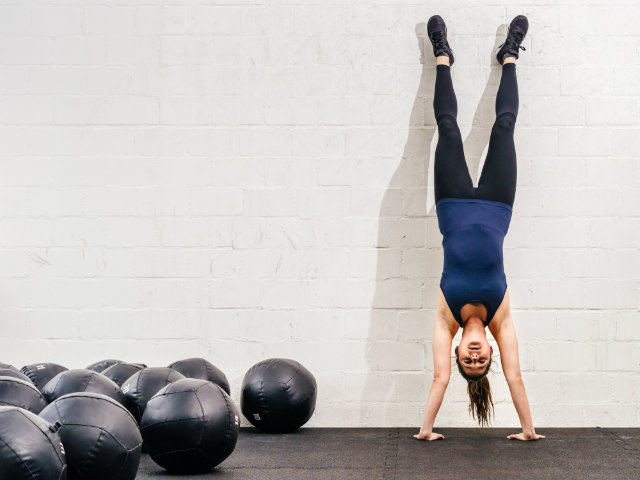
The Best Bodyweight Pushing Exercise
First, I am a huge fan of the humble push-up. I like it for its simple nature and ease of use. I like it because just about anyone can do it safely. And I like it because it has always been used as a standard measurement of fitness.
But is it the best option for pushing if it represents all the pushing you’re going to do? Probably not. Even the one-arm push-up — an even better test of relative strength than the regular push-up — can’t be used here. For most people, the one-arm push-up is more a test of core strength than pushing strength. You’re far more likely to fry your abs doing one-arm push-ups than your shoulders.
A big part of me wants to say handstands represent the best pushing option for bodyweight training. The flexibility, balance, and strength required to do a good quality handstand are well worth training for. But it’s more of a supporting exercise rather than a pushing exercise.
That leaves handstand push-ups as the king of bodyweight pushing exercises. If you can get three to five free-standing handstand push-ups out, then you will be more than strong enough in the upper body for anything that is thrown at you.
In addition, handstand push-ups are extremely portable and can be done anywhere (and if you can’t do freestanding reps, all you need is a piece of flat ground and a wall), and won’t destroy the abs or lower body the way one-arm push-ups will. They are also “heavier” in that a far greater percentage of your bodyweight needs to be shifted by your arms — you’ll get a one-arm push-up well before a handstand push-up.
The Best Kettlebell Pushing Exercise
The kettlebell press is a fantastic exercise. The downside to pressing heavy kettlebells is that as the bell gets larger, it places more and more stress on the shoulder joint as it tries to pull you into external rotation. It’s no exaggeration to say that a vast majority of the people I know who have spent a lot of time working on heavy kettlebell pressing have the worst shoulders out of everyone I know. Done with moderate weights for some volume they are fine, but once you step up the volume or intensity, you will discover that shoulder issues come sooner rather than later.
What we need is a drill that gives us the same feel as the heavy press and the same effort —without placing the same strain on the AC joint. This is where the bottoms-up press (BUP) comes into play.
The BUP is an interesting drill. It has been used in research studies by Dr. Stuart McGill who found it led to greater core activation. It’s also heavily featured in FMS correctives as a way to increase core, grip, and shoulder stability while minimizing stress on the joint. The BUP very nearly wins this category, but its downside is the massive CNS recruitment involved. You simply can’t get much volume in with a decent weight without blowing yourself to pieces.
So that brings me to the kettlebell jerk. I am a huge fan of this lift. Its ballistic nature bypasses the AC joint in terms of stress, as well as turning the act of pressing into a full-body lift that expresses athleticism in a way that strict pressing cannot.
Double jerks also require large degrees of ankle and thoracic mobility. For many, this degree of upper back flexibility will be difficult to attain, but just like with the handstand, working to achieve this will unlock many more physical abilities. And if you work for extended sets, like in girevoy sport, the degree of strength endurance you can achieve is almost impossible to believe.
The Best Barbell Pushing Exercise
Barbells are definitely the king of the heap when it comes to gaining maximum size and strength. However, they come with a drawback — you’re going to need to have healthy shoulders and good mechanics to use them a lot. Most of the complaints I get from people regarding their shoulders come from them overusing barbell pressing options when they have limited mobility.
One exercise that doesn’t get anywhere near enough love is the barbell military press. It’s a fantastic option for upper-body pushing and is performed from a standing position. That means you get all kinds of extra benefits such as glute, ab, and lower back activation while performing it. However, having your hands fixed to the bar can be problematic for some people and can cause an increase in shoulder issues. While it looks the same as the handstand push-up in many ways, it loses out a little due to the open-chain nature of the movement versus the closed nature of handstand push-ups. A good exercise, but not a great one.
When it comes to upper-body pushing exercises, the barbell bench press is probably the most iconic lift of all time. But the barbell bench press has a reputation for destroying shoulders and elbows, and doesn’t use the core at all because you’re lying down. That can be seen either as a plus or a minus. On the one hand, it allows you to lift more weight and truly develop your pushing strength free of distractions. On the other hand, you don’t learn to create force while standing. What really stops it being top dog in this fight, though, is the need for a specialized bench to perform it.
The winner of the barbell press exercise is the push press. It requires less specific skill and training than the split jerk, while offering the same easiness on the joints as the kettlebell jerk. The push press allows you to use more weight in a safer manner and teaches the body to be powerful — a skill lacking in many who train only heavy and slow.
Conclusion: The Best Pushing Exercises
If you wanted to put together a good pushing workout based on these three recommendations, I would structure it like this:
- Handstand push-ups: As these require the most skill and focus, they should be performed first. 3-5 sets of 1-3 reps.
- Barbell push press: Use 4-6 sets of 5-8 reps to give the best possible combination of muscle size and strength.
- Kettlebell jerks: Perform extended sets of 1-2 minutes at a time. Accumulate 5-10 minutes of jerks.
